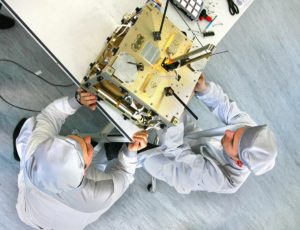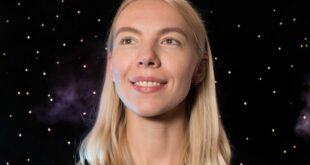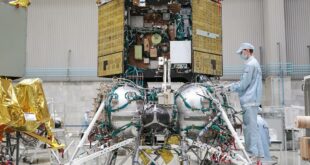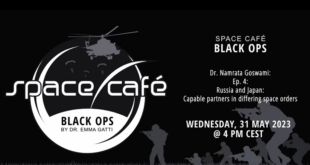
The history of the market economy in Russia can be traced back more than a quarter of a century, but the country’s private space sector began to emerge relatively recently: most of the industry players known today joined the market only about 5 years ago. This can be explained by certain legal issues that space companies had to face a few years ago, as well as a lack of trust in the sector on the part of potential investors. Nevertheless, the Russian private space sector can already boast several fairly large and medium players. We will describe briefly the main players. Below is a brief overview of the more prominent of these companies.
ScanEx receives and processes images from Earth remote sensing satellites. Its history began in 1989 with the production of equipment for weather stations, but shortly thereafter a decision was made to switch to the production of communication stations for receiving data from weather satellites (the company has produced a total of around 300 satellites). Eventually, ScanEx’s area expanded to include satellites data processing. Nowadays ScanEx has a staff of more than 200 people and an annual turnover of more than $1,6 million.
S7 Space specializes in launching payloads on medium-lift launch vehicles. It has plans to currently utilize the Zenit-3SL rocket capable of placing up to 15 tons of payload into the low Earth orbit and the Soyuz-5 rocket in the near future (up to 17 tons of payload into low Earth orbit). The company was founded in 2016 after the S7 Group air transportation holding had purchased the Sea Launch mobile maritime launch platform from the Rocket and Space Corporation Energia (the transaction amount is estimated at $150-160 million). Due to the fact that the renewed manufacturing of the Zenit version for Sea Launch platform is delayed, S7 Space received an order from the Rocket and Space Corporation Energia at the end of 2017 to launch the remaining available Zenit-3SB from the Baikonur Cosmodrome (the launch was successful, but the failures were detected in the satellite payload). The company has already ordered 12 Zenit-3SL launch vehicles from the Ukrainian State Enterprise ‘Production Association Yuzhny Machine-Building Plant named after A.M. Makarov’ (YUZHMASH) for launches from the Sea Launch platform, but their delivery is still hampered with the increased tensions between Russia and Ukraine (at the moment, the launches resumption is planned for the end of 2019). As a possible solution to this problem, Sergey Sopov, director general of S7 Space, has recently suggested resuming the production of NK-33 engines (previously used by the U.S. Orbital ATK company in the Antares launch vehicle) and building a plant in Samara for this purpose. The decision is yet to be made, but according to S7 Space estimates, the required investments amount to around $300 million. S7 Space is also interested in participating in the commercialization of the Russian ISS segment, if such a program were ever to be initiated by Roscosmos.
Interview with Sergei Sopov, director general of S7 Space:
Part I: https://spacewatch.global/2018/07/spacewatchgl-interviews-sergey-sopov-of-s7-space/
Part II https://spacewatch.global/2018/07/spacewatchgl-interviews-sergey-sopov-part-ii/
CosmoCourse is currently developing a suborbital rocket and a capsule for tourist space flights. The project provides for a flight with zero-gravity for 5.5 minutes at a price of $200,000-250,000. The company was founded in 2014, with the first tourist flights scheduled for 2025. The cost of the project is estimated at $150-200 million and has a single investor expected to provide the whole amount. The company has been licensed by Roscosmos and has completed a preliminary project that will be considered and approved by Roscosmos within the next few years. According to the current plan, the first elements of the company’s space system are to be produced in 2021, in 2022 ground tests will take place. Flight tests of the spacecraft and the launch vehicle are to commence in 2023. The staff of the company is about 50 people and continues to grow.
Interview with Pavel Pushkin, director general of CosmoCourse:
Part I: https://spacewatch.global/2018/07/spacewatchgl-interviews-pavel-pushkin-of-cosmocourse-part-i/
Part II: https://spacewatch.global/2018/07/spacewatchgl-interviews-pavel-pushkin-part-2/
Dauria Aerospace specializes mainly in building microsatellites for remote sensing of the Earth. It was founded in 2011 and has since had 5 satellites of its own design launched into orbit: in 2014, a pair of Perseus-M cubesats of the 6U format and a microsatellite DX1 were placed into orbit, in 2017 two 6MU-H cubesats of the 6U format under the state contract with Roscosmos. Between 2011 and 2015, the company had representative offices in Germany and the USA, but due to the political situation the company decided to focus on the Russian market. The company currently has an investment package worth around $100 million and orders for 6 satellites with a total cost of $300 million. In order to fulfil the contracts, a platform for geostationary satellites with a mass of up to 1 ton with a payload of up to 300 kg is being developed. Unfortunately, no telemetry was received from the last pair of Dauria’s satellites after launch, after which the Lavochkin Research and Production Association lodged a claim for the sum of $387,000 to pay for the launch services and Roscosmos claimed compensation for the failed satellites in the amount of $4,6 million. It was the second lawsuit against the company, the first claim for $131,000 being based on the delay in the contract fulfilment (according to the initial plan, the launch was supposed to be carried out by the end of 2016). According to Dauria Aerospace’s CEO Sergei Ivanov, if these claims are satisfied, the company will face bankruptcy. However, some experts tend to think that the satellites failure was caused by anomalies in the performance of the launch vehicle’s upper stage (it should be noted that the Astro Digital company, whose satellite was in the same payload cluster, has already received insurance payments). The investigation into the matter is still in progress, which leaves chances for a successful outcome for Dauria Aerospace.
SPUTNIX specializes in cubesat development, including cubesat models for educational purposes, as well as associated equipment. Most of the company’s profits come from educational projects, and the remaining 15% is the distribution of components for cubesats to Kazakhstan, France and the Pakistani Space and Upper Atmosphere Research Commission. OrbiCfart-Pro cubesat construction kits that are identical to flight versions of the company’s cubesats have been developed for use by university students. Cheaper versions for high school students are available as well. The company was founded in 2011 on the basis of a ScanEx subdivision and it took part in the development of the Chibis-M (‘Lapwing’) micro-satellite launched a year later, with ScanEx. Also, SPUTNIKS launched its own satellite TabletSat-Aurora in 2014. As of this writing there are two 1U format SiriusSat cubesats on board the ISS, built as part of a high school student program, that are scheduled to be deployed from the station during the upcoming Russian spacewalk in August. In addition, SPUTNIKS together with the Anisoprint company is developing a 3D printer that prints particularly strong components from carbon fiber. The current staff strength is 50 employees.
SiriusSat Cubesats Built by SPUTNIX with Student Input Launch to ISS: https://spacewatch.global/2018/07/siriussat-cubesats-built-by-sputnix-with-student-input-launch-to-iss/
NSTR Space Systems (New Space Technologies Research) produces a network of automated telescopes and is developing an ERRAI class ultra-light rocket for launching payloads with the mass of 1 to 10 kg. The company has received several hundred thousand dollars of investment and was the first Russian private space company to test a liquid-propellant rocket engine with a thrust of 85 kg. The company has recently announced that it will build its own manufacturing facility in Voronezh Oblast (region). However, the total investments required to implement the project of an ultra-light launch vehicle are estimated at about $8 million, which the company does not have yet.
Lin Industrial develops several ultra-light and small-lift launch vehicles for payloads with the mass of 10 to 1000 kg. The company was founded in early 2014 and was ready to conduct fire tests of its first engine with 150 kg of thrust at the end of 2016 (unfortunately, it was unsuccessful). But due to a lack of funding, further development has slowed down considerably. The necessary funds for their project of an ultra-light launch vehicle are estimated at €13 million.
Azmerit specializes in the miniature star sensors production for microsatellites. The company was founded in 2012 and in the middle of 2015 started ground testing of its first sensor. The company employs a small staff of 10.
AeroState monitors air pollution using satellite imagery. It cooperates with the Yandex.Maps service providing data on pollen content in the air, which is especially important for allergic individuals.
3D Bioprinting Solutions develops 3D bioprinting technologies. The company was founded in 2013, and was included in this list because of its magnetic printer “OrganAvt”, which is scheduled to be delivered to the ISS for tests by the end of 2018.
Yaliny Ltd is a start-up created in 2013 with an ambitious idea of creating a low-orbit network of 144 satellites using an optical communication system. The cost of a single satellite was estimated at $6 million, and the cost of the whole project at $1.5 billion. However, by 2016 the company managed to raise only $4 million of investments, which was insufficient for the first technology demonstration prototype. Due to financial problems, the company had to reduce its staff from 70 to 25 people, and it now focuses on the production of the equipment of its own development. Startup creator Vadim Teplyakov has hopes to return to the original project in the future.
ImageAiry is a subsidiary of the U.S. Astro Digital company, which provides satellite imagery processing data to various customers: its priorities are agriculture, environmental monitoring, urban planning and business analytics.
Galaktika (‘Galaxy’) is a group of companies, currently including 5 companies involved in a wide range of activities ranging from composite material development and 3D printing in space to creating its own launch vehicles (one of their projects was developed in cooperation with Lin Industrial), satellites, as well as processing of Earth-monitoring satellite imagery. The company was founded in 2016 and expects to launch its first satellite as early as 2019, to develop its suborbital rocket in 2021, and to complete its 170-microsatellite constellation deployment in 2025. It is planned to attract about $300 million in investment for all of the projects mentioned. Its staff strength is currently 350 employees. Galaktika positions itself as an international business and has plans to open an office in Luxembourg in the near future. Owner and president Alia Prokofieva was also a co-owner and member of the Board of Directors of the Energia Group of Companies (engaged in the production of titanium and aluminum pipes, as well as other load-carrying structures for airframes), a member of the Russian monocity development project and a member of the expert council for economic modernization under the President of the Russian Federation.
Recently, the Roscosmos State Space Corporation has announced its intentions to simplify interaction between the government and Russia’s private space companies, and several space startups with substantial amount of investment have joined the market. This leads one to think that private space business in Russia has a promising future.
Denis Nyrkov – is a science and space exploration educator, member of the Mars and Planetary society. Author of approximately one hundred articles for various online sources. He is an advocate of human missions to Mars.
 SpaceWatch.Global An independent perspective on space
SpaceWatch.Global An independent perspective on space





